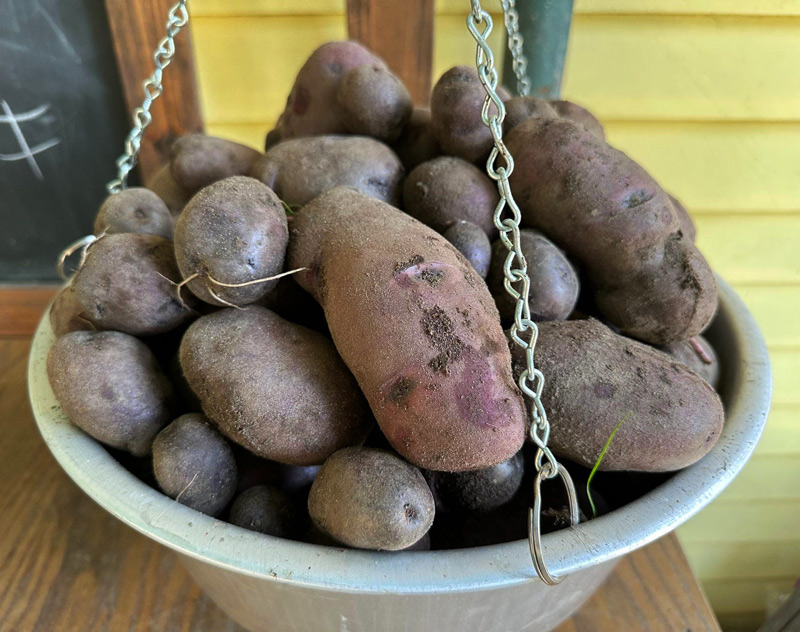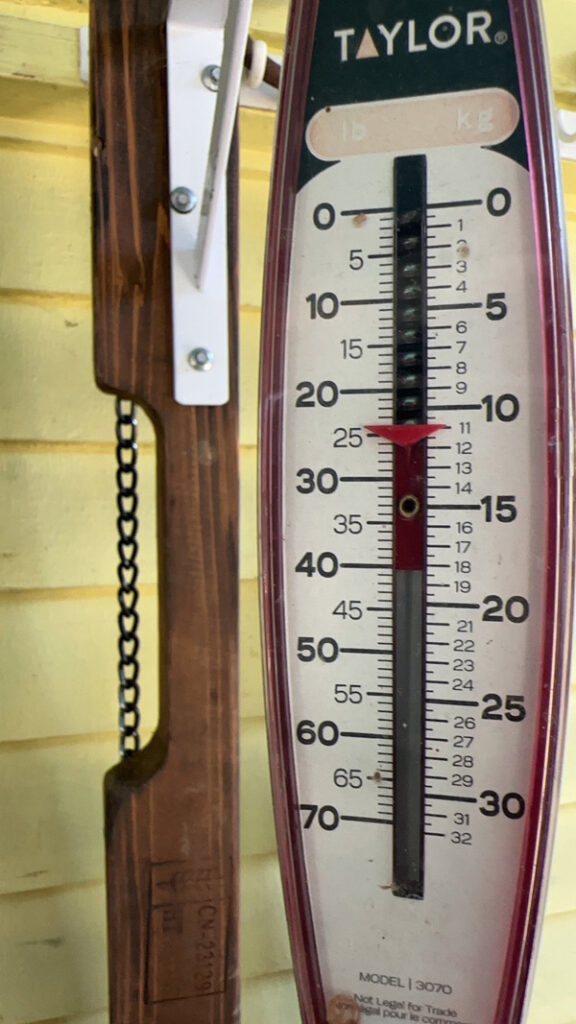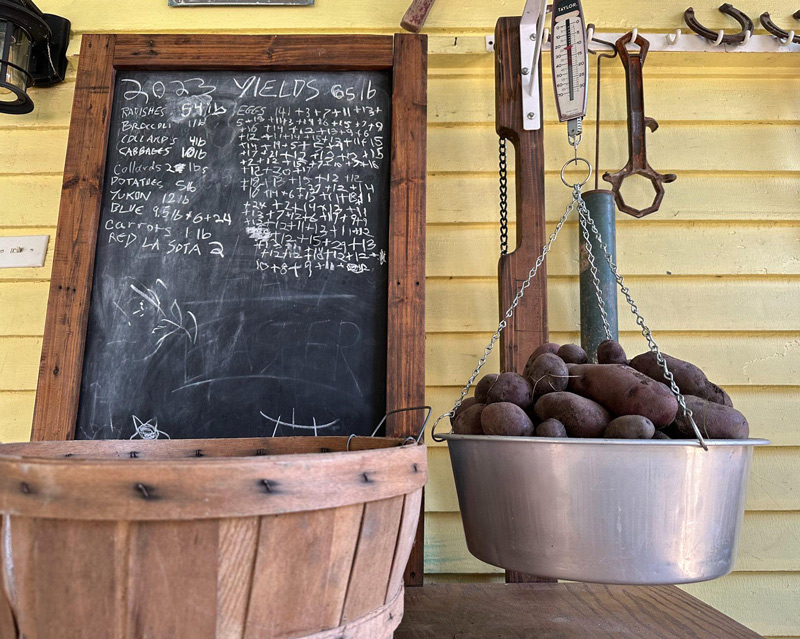Growing potatoes at our previous property was quite disappointing. We had issues with rot, insects, blight, terrible yields and more.
The dirt was atrociously bad, acid and worthless. Even with fertilization, cover crops and amendments, the potatoes failed to yield well at all. We might have done been better off eating the seed potatoes instead of planting them.
Here on the new property, we are really starting to see the difference between dirt and soil. The initial yields are coming in for spring and it’s looking much better.
We pulled 23lbs of Adirondack Blue potatoes yesterday.


The scale is one pound off, so we always have to subtract a pound when we weigh.
We’ve already made up for the amount of seed potatoes we planted and still have a half-bed and and another 5′ x 5′ patch of potatoes to pull.
Most of the Adirondack Blue potatoes were planted in one of the yam beds, which you can see better in this video we posted yesterday.
The yams produce in later fall, early winter, and the potatoes produce in spring. By alternating harvests we can get two high-calorie yields from the same space.
Last night Rachel baked two trays of blue potatoes for dinner and we had friends over to enjoyed our strangely colored spuds. They don’t taste different from white potatoes, that I can tell, but they do bake to a pale lavender color which is quite fun. Apparently, the anthocyanin content makes blue potatoes healthier for you than plain white ones.
However healthy they are, they sure are fun to grow. I was pleasantly surprised by the vigor and yield of the Adirondack Blue variety in our Lower Alabama backyard. Many of the potatoes were of a good size and the productivity was high per plant, especially considering that we had cut each seed potato into small pieces with single eyes.
We’ll grow these again. We also got a plant that set fruit, so we hope to plant those seeds next year and see what interesting potato plants result.
The Adirondack Blue potatoes also grew and died back faster than our Yukon Golds, Russet, Red La Soda, Pontiac and Kennebec potatoes, producing a good yield in a short time period. This is good in our heat, as potatoes that take too long often suffer from the heat, humidity, rain and insects of summer.
It will be interesting to see how potatoes do in future years as the soil improves.


2 comments
Fantastic!
Waffled a bit over the winter, about whether to plant or not (I always lose this one, and the planting wins… but sometimes it takes a while) and got a late start, but things are really cracking now. Glades tomatoes, which kindly seeded themselves from last year’s plants– I have been continually pulling apart clumps of little volunteer plantlets and re-potting them, until I can either give them away or get enough garden bed dug and composted to put them in the ground– are covered in fruits, and the first ones are just starting to ripen. Got a packet of some kind of greens from the Korean grocery– they turned out to not be what I thought they were (no idea what they are, all the text is in Korean! They are hairy, and maybe something in the mustard family), and those are going great guns. Have been eating them for breakfast with my eggs every morning and they are tasty. Ditto the basil plants. Spent the last year confined to “gardening” in pots, and it feels **so** good to be messing about in the yard again (protip: if you’re stuck in a rental and not sure if it’s OK to make a garden, asking forgiveness beats asking for permission!). Scored three bags of free mulch from the curb yesterday: someone had very considerately mower-chopped and bagged up a whole yard full of magnolia leaves for me, so I just pulled over and threw them in the truck, to the great delight of my children. Now all my transplanted stuff is snugged in with a thick blanket of sweet-smelling carbon mass and I won’t have to water everything twice a day just to keep it alive in the heat (yay!). Can’t wait for the pumpkins to find the buried treasure (chicken guts, etc) and take off running.
Purple mashed!
Comments are closed.